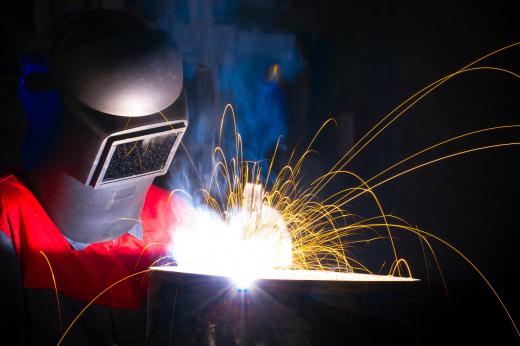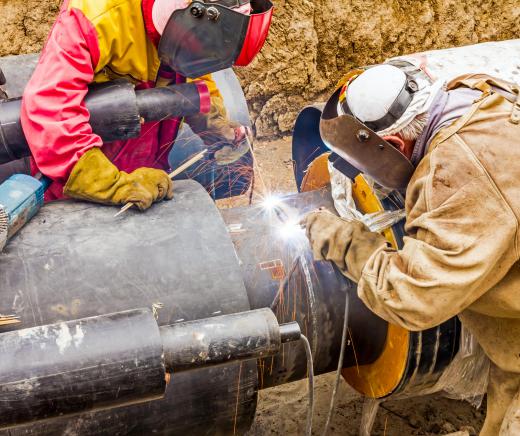Flux wire is utilized in a metal joining process known as flux-cored arc welding (FCAW). It consists of a metal tube with a core of flux and acts as an electrode during the arc welding process. The metal portion of the wire liquefies during arc welding and is used to join two pieces of metal, while the flux helps to keep the weld free of contaminants. Flux is a general term used to describe any one of a variety of compounds that may act as chemical cleaning agents during a welding or soldering process. These cleaning properties can allow flux wire to be used without a shielding gas in certain circumstances.
There are two different kinds of flux cored arc welding, and thus two main types of flux wire. Each type is specifically designed to be used either alone or in conjunction with a shielding gas. Generally, in arc welding, a shielding gas, such as argon, is used to keep the welding area free of contaminants and to help reduce oxidation as the welding wire is heated and subsequently cools.

Gas shielded flux core wire uses the same general principle as regular gas shielded arc welding. The flux present in the wire can also help when welding in awkward positions, as the flux may cool faster than the liquefied wire. This can potentially create a ledge of sorts to keep the liquid weld in place until it solidifies. Slag, or solidified flux material, may also be easier to remove with this method.

The other type of flux wire is known as self shielded. This variety may be more portable and easier to use, as it doesn't require bottles of shielding gas to be brought to the weld site. When the flux in self shielded flux wire melts, it can create its own protective shielding gas. While this has a similar effect to the gas used in gas shielded arc welding, it may result in less aesthetically pleasing welds.
Whether to use a traditional gas shielded method or one of the flux wire varieties is often dictated by the thickness of the metals being joined, and where the welding is being done. If the weld is in an inconvenient spot and it might be difficult to keep the weld material in place, gas shielded flux wire is often used. Self shielded flux wire may be convenient in other circumstances, such as if the weld must be done outdoors in the presence of wind. While the wind may blow away traditional shielding gas, the self shielding variety can continuously create a protective pocket of inert gas as the flux is melted.
